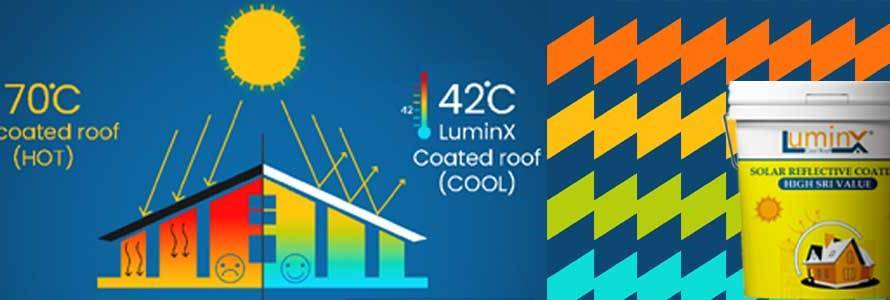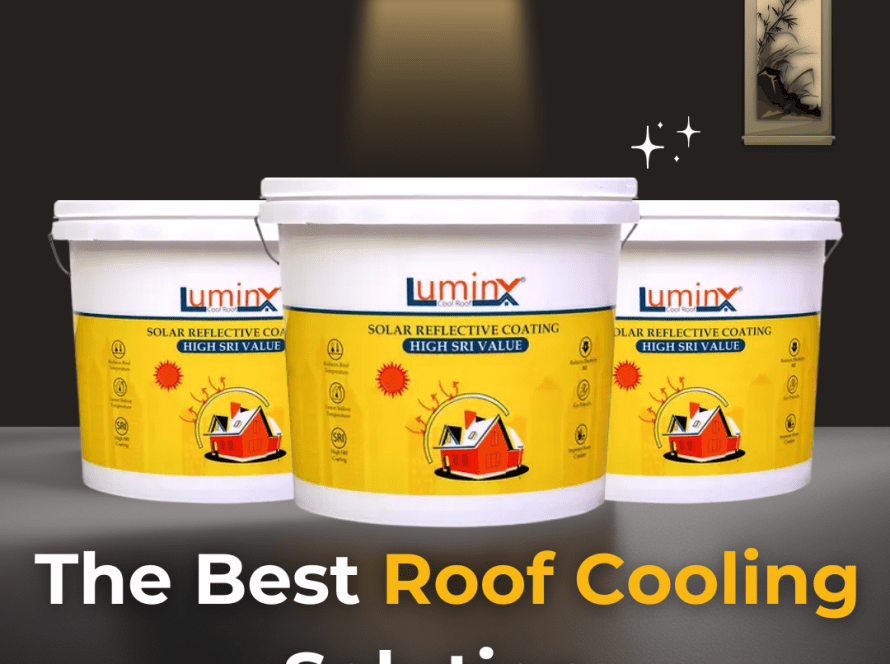As climate change speeds up, more people live in towns with heat islands. Some people and building managers want to find ways to lower their energy costs and keep their homes cooler. A choice that is becoming more common is roof paint, which keeps the roof cool. This new layer helps buildings stay cooler by reflecting more sunlight and letting less heat in than regular roofs. But there are a lot of lies and false ideas out there about roof-cooling paint, even though it has become more popular. This article discusses common myths about cool roof paint and this helpful technology to help you understand it better.
Myth 1: Roof Cooling Paint Is Regular
Many people believe that cool roof paint is conventional. It is designed to deflect heat and cool things down. Modern materials block most of the sun’s UV and infrared rays in roof-cooling paints, cooling the roof and building interior.
Standard oils are mainly about appearance and weather protection. They lack sunlight-reflecting hues and materials. However, roof cooling paints with ceramic microspheres or pigments that reflect light better block sun rays. This decrease in heat absorption can improve comfort and energy efficiency.
Myth 2: Only warm environments function
Another fallacy is that excellent roof paint only works in hot climates. Although this paint’s primary purpose is to prevent heat absorption, it’s effective in more than hot or desert locations. Even in mild climates, roof cooling paint can save electricity in summer. It also reduces temperature stress, which improves roof durability. Community benefits from cooler roofs include reducing the urban heat island effect.
Even in cooler regions, summer heat may heat dwellings. Roof cooling paint reduces this gain by making the inside more comfortable and reducing air conditioning needs, even in places with a combination of dry and wet seasons, minimising roof temperature variations can impede expansion and contraction, damaging materials over time. Using roof cooling paint can reduce repairs and extend roof life.
Myth 3: Roof cooling paint eliminates air conditioning
Some believe that cool roof paint on their roofs eliminates air conditioning. Although roof cooling paint can significantly lower interior temperatures and heat gain, it cannot always replace air conditioning. Air conditioning may be essential in hot locations to keep rooms cool. However, roof cooling paint reduces the workload of air conditioners, saving money and energy.
Roof cooling paint lowers house temperature, improving air conditioner performance. Lowering energy utilisation reduces power costs and air conditioner workload, extending their lifespan. Roof cooling paint may not eliminate air conditioning, but it can save money and energy.
Myth 4: One-Size-Fits-All
Contrary to popular belief, Luminx cool roof paint can only be used on some roofs and buildings. Roof material, paint colour, and external temperature can affect roof cooling paint performance. Lighter colours reflect more light than darker ones. The original roof state and orientation (angle and direction) can also affect cooling paint performance. Talk to a roofing professional about the finest cooling paint for your situation.
Different roofing materials react differently to roof cooling paints. Metal roofs may outperform asphalt shingles or concrete tiles. Different materials affect how effectively paint clings and works. Location and weather also affect the optimal approach. So, for maximum outcomes, you need a tailored solution, usually prepared by professionals.
Myth 5: It’s expensive and ineffective
It’s a common misconception that roof cooling paint needs to be pricier and more effective. While it may cost more initially, it can save you money over time. Fewer air-cooling cycles can cut energy expenditures and extend roof life by reducing heat stress. Many cities offer subsidies or other incentives for energy-efficient roofing systems, making roof-cooling paint cheaper.
Consider the big picture of money while calculating cost. Over time, saving money on energy expenditures can mount up, and fewer repairs and maintenance might help explain the initial cost. Utility companies and government programmes often reward energy-efficient equipment. This gives roof-cooling paint a better value. These benefits include tax credits, rebates, and subsidies that minimise installation costs.
Myth 6: Roof cooling paint is untested and new
Some people are wary of cool roof paint because it’s new and untested. However, many industries, including aerospace and automotive, have employed reflective coatings for years. Roof-cooling paint concepts are well-established and supported by research. Many real-life case studies show that roof-cooling paints reduce heat absorption and increase energy efficiency.
Cool roof coatings use proven science. Light-reflecting coatings have proven trustworthy and valuable in heat control sectors. Heat-management surfaces that reflect light have been used on space flights to protect equipment from high temperatures. This technique has been employed in research and real-world applications for decades, making it a solid corporate and residential roofing option.
Myth 7: It must be repeated
Another fallacy is that roof cooling paint needs frequent reapplication. Due to weathering, all coats will wear away, but good roof cooling paints last long. Depending on the quality and weather, roof cooling paints can last 10–15 years or more. Regular maintenance and inspection can extend layer life.
Durability is a significant consideration in roof cooling paint design. High-quality products are extensively tested to withstand intense sunlight, heavy rain, and temperature variations. The heat-reflective paint stays reflective because it has solid binders and pigments that don’t break down readily. Some maintenance is required, although it’s much easier than ordinary roofs.
Myth 8: Environmentally harmful
Some believe roof cooling paint is environmentally harmful. Many are eco-friendly, with low VOCs and other pollutants. Because they consume less air conditioning, roof cooling coatings assist power plants in reducing carbon dioxide emissions. Cooling paints can lessen the urban heat island effect, improving health and the environment.
Environmental safety is crucial when producing heat-reflective paint. Companies increasingly seek to make products that operate well and are environmentally friendly. Low-VOC formulations prevent air pollution by avoiding harmful compounds. Through energy efficiency and electricity reduction, roof-cooling paints indirectly fight climate change by reducing carbon footprints.
Conclusion
Paint for the roof that keeps the cool is an excellent way to deal with high energy costs and city hot spots. Getting rid of these common tech myths will help us understand its benefits and choose whether to use it. Roof cooling paint is a great way to save money on cooling costs, make a building more energy efficient, and make the whole area more comfortable. This is true whether the building is a home in a quiet town or a business in a busy city.




